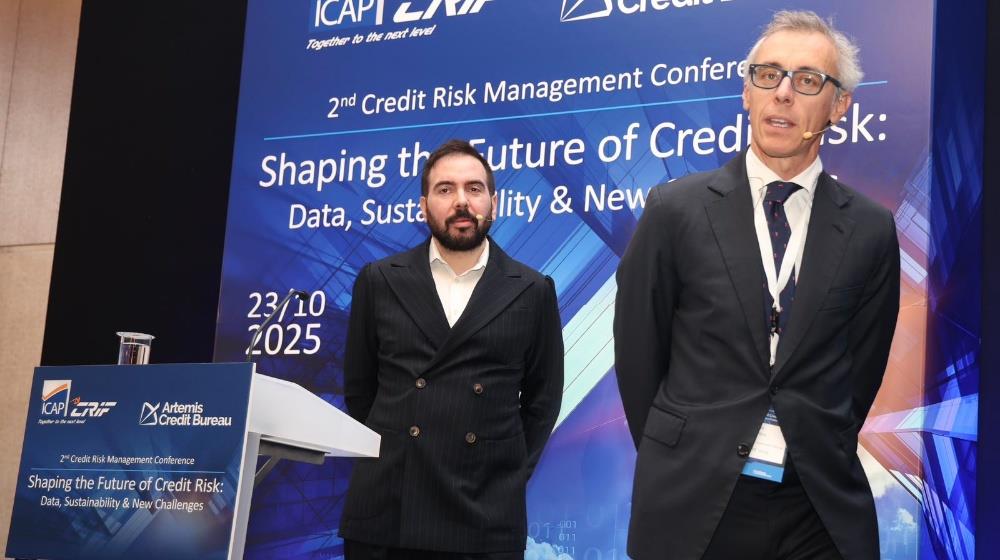In a world defined by rapid change, economic uncertainty, and geopolitical turmoil, risk management has become more crucial than ever. This was the key message conveyed by Giorgio Costantino, Executive Director of Global Transformation Services at CRIF Group, and Dimitrios Porichis, Senior Manager of Business Consulting & Credit Risk Analytics at ICAP CRIF, during the 2nd Credit Risk Management Conference organised by ICAP CRIF in collaboration with Artemis Credit Bureau Ltd.
The speakers illustrated how AI technologies can be leveraged to tackle emerging challenges, and added that the key words of our times are “Uncertainty and Disruption”. As they explained through a simplified framework, these are shaped by three main forces:
-
The erosion of international trust,
-
Rising US tariff policies, reaching up to 50%,
-
Climate change, which causes GDP losses of up to 0.14% due to extreme weather events, and finally,
-
Artificial Intelligence and Generative AI, which represent both an opportunity and a challenge.
Within this context, the speakers highlighted that, despite the support of European institutions, businesses often face an overly regulated environment, making modern risk management tools essential. Through its Analytics & Transformation services, CRIF promotes machine learning (ML) models that combine internal and external data sources to provide highly specialised and granular “custom-fit” models — for instance, those addressing climate-related risk management.
The use of Generative Artificial Intelligence enables greater efficiency in credit risk processes, allowing professionals to focus on tasks that generate real value. According to the speakers, the combination of these three tools has led to the development of “trained” models that increased the identification of high-risk clients by approximately 25%, while reducing risk costs by 20%.
In conclusion, they argued that the strategic use of data, technology, and a proactive approach have become fundamental pillars for effective risk management in an “unstable and geopolitically charged environment”.









